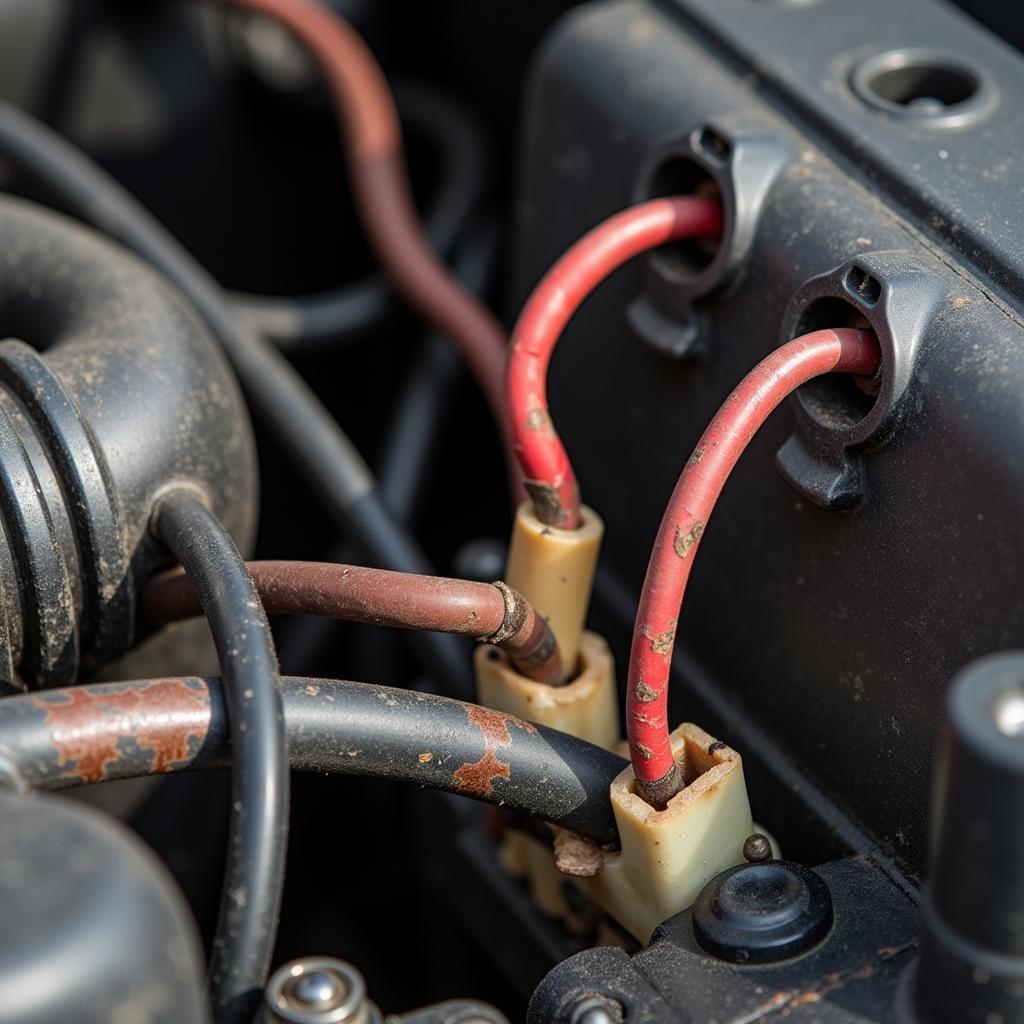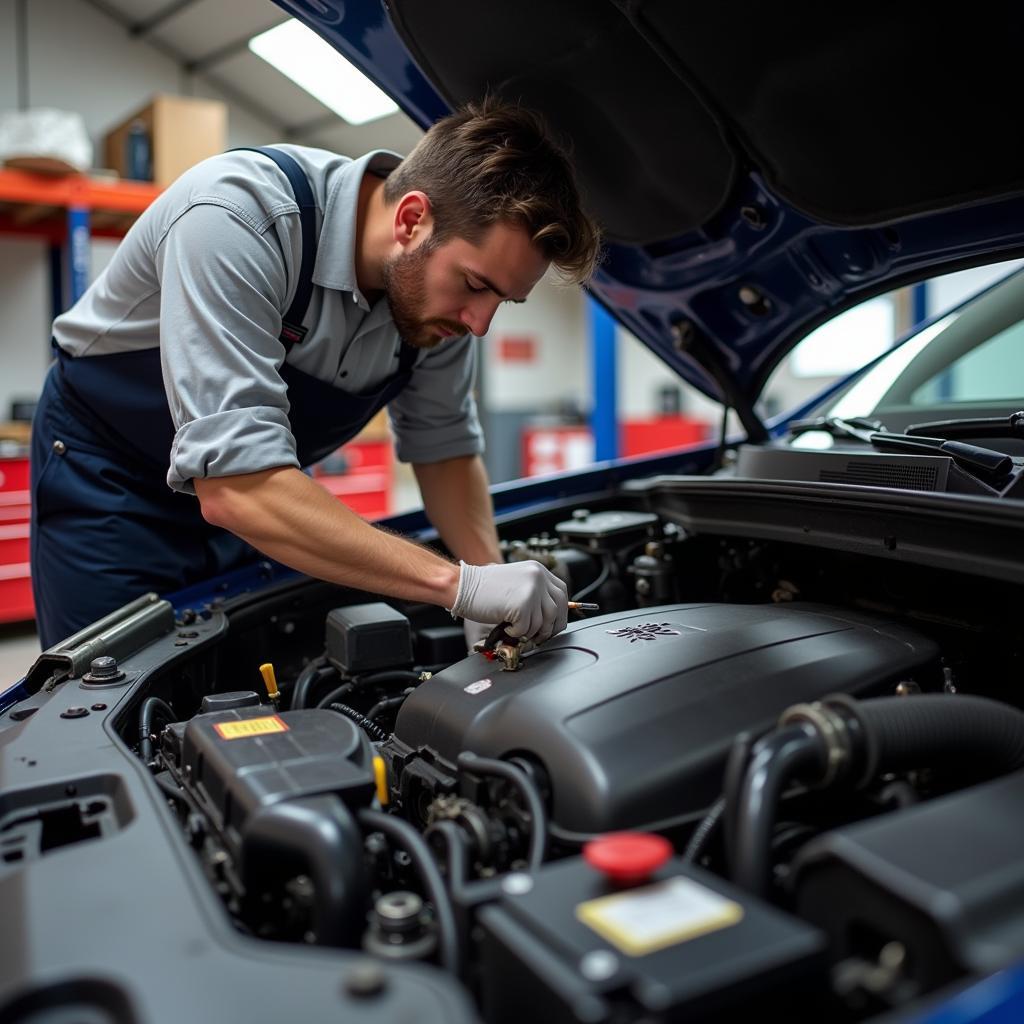Mice infestations in your car’s engine compartment can be a frustrating and costly problem. These furry little creatures can cause significant damage by chewing through wires, hoses, and insulation, leading to electrical malfunctions, fires, and even complete engine failure. This guide will help you identify, prevent, and eliminate mice from your engine bay, saving you time, money, and headaches.
Getting rid of mice in your car’s engine compartment requires a multi-pronged approach. We’ll explore various methods, from natural deterrents to professional-grade solutions, so you can choose the best strategy for your situation. Remember, early detection and swift action are key to minimizing the damage and preventing recurring infestations. Check out this helpful resource: how to get rid of mouse problem inside the car.
Identifying Signs of Mice
How can you tell if mice have taken up residence in your engine bay? Look for these telltale signs:
- Droppings: Small, dark, rice-shaped droppings are a clear indicator of mouse activity.
- Nests: Mice often build nests using shredded paper, insulation, and other materials. Check in and around the engine compartment for any signs of nesting materials.
- Gnaw marks: Look for chewed wires, hoses, and insulation. Mice have constantly growing teeth and need to gnaw on things to keep them trimmed.
- Footprints: Dust the area with flour or talcum powder to detect tiny footprints.
- Unusual odors: A musty or ammonia-like smell can indicate a mouse infestation.
Why Mice Are Attracted to Car Engines
Why do mice choose car engines in the first place? Engines provide warmth, shelter, and access to food sources like spilled pet food or birdseed nearby. During colder months, the warmth radiating from the engine is especially appealing. Additionally, the numerous crevices and hiding spots within the engine bay make it an ideal nesting location.
 Mice Damage Car Engine
Mice Damage Car Engine
Preventing Mice from Entering Your Engine Compartment
Prevention is always the best approach. Here are some effective ways to deter mice from your car:
- Keep your car clean: Regularly remove food debris and crumbs from your car’s interior and surrounding areas.
- Park in a garage: If possible, park your car in a garage or enclosed area.
- Seal entry points: Inspect your engine compartment for any openings or gaps where mice could enter. Seal these openings with steel wool or wire mesh.
- Use natural deterrents: Place peppermint oil-soaked cotton balls, dryer sheets, or mothballs around the engine compartment to discourage mice.
Removing Mice from Your Car Engine
If you’ve already discovered an infestation, here are several methods to eliminate the mice:
-
Traps: Place snap traps or glue traps strategically around the engine compartment. Bait them with peanut butter, chocolate, or nesting materials.
-
Rodent repellent sprays: Use commercial rodent repellent sprays designed for use in car engines. Follow the manufacturer’s instructions carefully.
-
Ultrasonic devices: Install ultrasonic devices that emit high-frequency sounds that are unpleasant to rodents.
“Ignoring even minor signs of mice can lead to costly repairs down the road. Addressing the problem immediately is always the most economical approach,” advises John Smith, Lead Automotive Technician at Autotippro.
Professional Pest Control
If DIY methods fail, consider contacting a professional pest control service. They have the experience and tools to effectively eliminate mice infestations and prevent future occurrences. For more information on getting rid of mice in your car, see [how to get rid of mouse problem inside the car](http://autotippro.com/how to get rid of mouse problem inside the car/).
 Mechanic Inspecting Car Engine
Mechanic Inspecting Car Engine
Cleaning Up After Mice
After removing the mice, thoroughly clean the engine compartment to eliminate droppings, urine, and nesting materials. Use a disinfectant cleaner and wear gloves to protect yourself from potential health hazards. “Sanitizing the affected area isn’t just about cleanliness; it’s about preventing the spread of disease and eliminating lingering odors that can attract new rodents,” adds Maria Garcia, Certified Automotive Electrician.
Conclusion
Dealing with a mice problem in your car engine compartment requires a proactive approach. By understanding the signs, causes, and preventative measures, you can effectively protect your vehicle from costly damage and maintain a healthy and safe driving experience. Remember to act quickly if you suspect an infestation, and don’t hesitate to seek professional help when needed. Contact AutoTipPro at +1 (641) 206-8880 or visit our office at 500 N St Mary’s St, San Antonio, TX 78205, United States for expert advice and assistance with your Mice Problem In Car Engine Compartment.
Need help getting rid of mice in your car? Check out this guide: how to get rid of mouse problem inside the car.




Leave a Reply